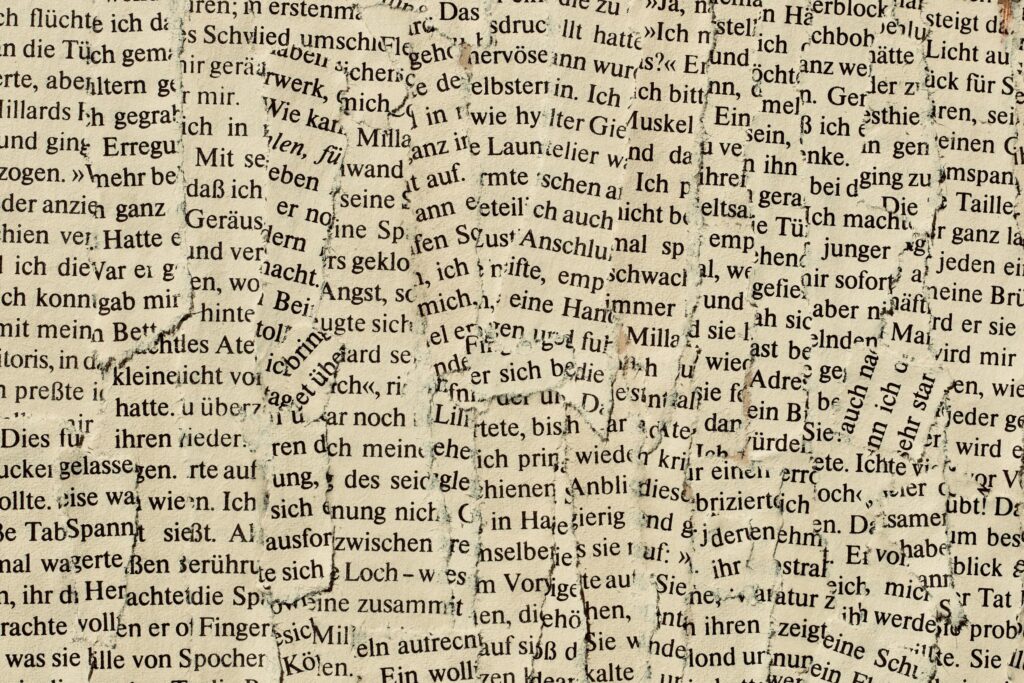When it comes to the quality of information, traditional media outlets are much less likely to substantially misguide us than other sources of information. Different from social media influencers, for example, they are made up of teams of qualified professionals, are typically regulated by public bodies, and have review processes in place.
That doesn’t of course mean that they never fail. Well-established newspapers can sometimes publish misinformation, and for a number of different reasons. They may sometimes misguide because they are negligent with the information they reproduce, not verifying it properly, because their journalists and editors share an unconscious bias that leads them to wrong assumptions, because they get an economic benefit from it (either by making us click and share more, or by giving us what we want to see – and pleasing us as customers) or, even, intentionally, because of their ideological, political and private alignments – what we would call an ‘agenda’.
Reputable news outlets, from what is often referred to as ‘mainstream media,’ should probably remain our primary sources of information. However, acknowledging their potential shortcomings and establishing strong systems to reward adherence to rigorous journalistic standards could be key to restoring credibility in the news industry and making quality information both desirable and financially sustainable
***

When we think about ‘fake news’, we often think about that weirdly bizarre story someone we know may have read (and maybe shared) on social media – something like “Trump eats babies for breakfast”. To believe a story like this takes time – that person probably started with a more simple story that was not so hard to believe but which leveraged their anger or fear. That story then probably linked them to another story, and to another story, until they ended up being consumed by the rabbit hole of misinformation. If you read Andrew Tate’s posts, for example, 95% of those consist in motivational common place and is very easy to relate to – and it’s precisely that 95% that is leveraged to convince followers of the 5% of absurdity. More and more, we see people falling into that deep hole, one that is very hard one to climb out of. But as much as it is a dangerous contemporary problem, media literacy – teaching people to identify reliable sources and verify stories – is a very efficient way to prevent them from going down that path. In other words, it is relatively easy to prove that false information is false.
However, a potentially more dangerous type of misinformation can sometimes be found in well-established newspapers: the one that misleads you with the truth, or with fragments of the truth hand-selected to confirm or instigate a certain opinion on the reader (see is fake news really fake?). This type of misinformation doesn’t consist in fabricated facts, but on biased narratives (more properly ‘theories’) connecting true facts to each other in a misleading way (see how to differentiate fact from opinion). This is more dangerous because simply verifying the information at hand isn’t enough to identify that type of bias (after all, the information isn’t actually false), but rather only a more critical and holistic analysis of its content (see how to avoid misinformation). Respectable newspapers usually have a process in place to verify the facts they publish, and any of their journalists who tries to publish blatantly false information would likely be sacked. For that reason, when newspapers publish misinformation, albeit more rarely, it is usually the more dangerous type.
Some people may have a hard time believing that their favourite newspaper may sometimes misguide them, and might go as far as arguing that this is some sort of ‘conspiracy theory’ – after all, it threatens their sense of stability: “If even respectable newspapers might mislead me, then who can I possibly trust?” But considering the multitude of people who work and review information for those newspapers, the political connections of their shareholders, the lack of resources in the industry and the fact that any human – even a journalist – needs to constantly work on avoiding their own biased opinions, it actually seems very naïve to believe this could possibly be an entirely error-free process.
“Respectable newspapers usually have a process in place to verify the facts they publish, and any of their journalists who tries to publish blatantly false information would likely be sacked. For that reason, when newspapers publish misinformation, it is usually the more dangerous type”
When it happens, misinformation in the mainstream media is typically caused by at least one of 7 main reasons:
Negligence. The first reason is mere negligence – when newspapers simply do a bad job. Newspapers are constantly competing with each other and need to post fast. Sometimes, they repost the stories that others are publishing without properly verifying them – and might just be importing someone else’s bias. Other times, they don’t really have the resources to check all the content they produce, specially if this is more niche information (for example, if they are publishing a piece written by an overseas correspondent). Remember, for example, when most large newspapers published entirely fabricated headlines saying that our memory span was shorter than that of a goldfish, only to be later debunked by the BBC (who had also previously published the very same headline)? They simply didn’t check whether the source cited had really carried out that study.
Unconscious bias. Journalists are just human beings, and, just like us, they are victim of unconscious bias. Sometimes the author’s or the newspaper’s collective preconceptions may lead them to make false inferences and take wrong conclusions, without properly assessing the full picture. They may assume, for example, that a piece of work is likely to be a fair depiction of facts and not require more thorough verification simply because it seems plausible to them. An emblatic illustration of this happened duting the COVID pandemic, when over 70% of images linked to the country of Brazil on articles published by major newspapers showed poor native people crying over bodies in a particular cemetery in the middle of the Amazon jungle (to verify, Google “Covid Brazil”). No one cared to check that Brazilians are mostly urbanised (c.90%), middle-class, ethnically diverse (the biggest ethnic group being White/Caucasian, with 48% of the population, and the smallest precisely the natives, with 0.4%) and live thousands of miles away from the Amazon.


Covid in Brazil as portrayed by the mainstream media
Covid in Brazil as portrayed by the local media
Sensationalism. Sensationalism, or yellow journalism, is probably the most common type of disinformation (a subset of misinformation where the bias is intentional). In the digital world, newspapers are constantly fighting for clicks. Not just because more exposition may lead to more subscriptions, but also because the more people read and share their articles, the more views their ads will get, and the more they will be paid for those ads. A study by the MIT observed that ‘fake news’ travels over 6 times faster than the average news story.
Commercial benefits. Even when publishers don’t use emotionally-charged (mis)information to trigger engagement, they still have an audience to grow and preserve. In our polarised world, people have emotional relationships with political leaders and opinions, and publishers don’t want to upset and lose their readers (see Charismatic leadership & the demise of opposition). Therefore, knowing their target audience, they may refrain from or minimise facts that readers don’t want to see. It’s still disinformation, as they are intentionally distorting the narrative for their own good.
Ideological association. Newspapers tend to have ideological alignments, and many are not discreet about it. Sometimes this may lead to a collective unconscious bias, but sometimes authors and institutions might be aware of the distortions in their narrative and actively try to promote a narrative or an agenda (even if they believe this is for the common good – for example minimising positive things done by a politician or political party which they might find inadequate). Just like it happens when they pass along unconscious biases, the end-effect is also to promote or reinforce a misconception in society. But, in this case, the promotion is intentional, and advances their ideological causes.
Political association. Government officials, politicians and political parties can also exert an active influence on the media. This can be direct, when there is a direct relationship between publishers and public figures (many political leaders have been caught liaising with managers of important publications in the past). It can also be indirect, for example through granting of public loans to media outlets (for example through increasing the fees for the TV licence, if you’re thinking of the UK), or the expectation thereof, which may represent a favour that needs to be returned.
Private association. Obscure relationships between newspapers and groups or individuals don’t happen only on the public sphere. Sometimes, newspapers may also have connections to private players. Just like in political associations, this type of association can be direct, for example when that private party owns equity or has a management position in the outlet, or indirect, when there are other less explicit bonds such as event sponsorships, advertising contracts or even family and affective ties. Rupert Murdoch is an iconic example of a controversial private figure that has a huge control over the media, and therefore can largely influence narratives and storytelling.
Download Beehive News now to make sure you are exposed to the best news out there.


